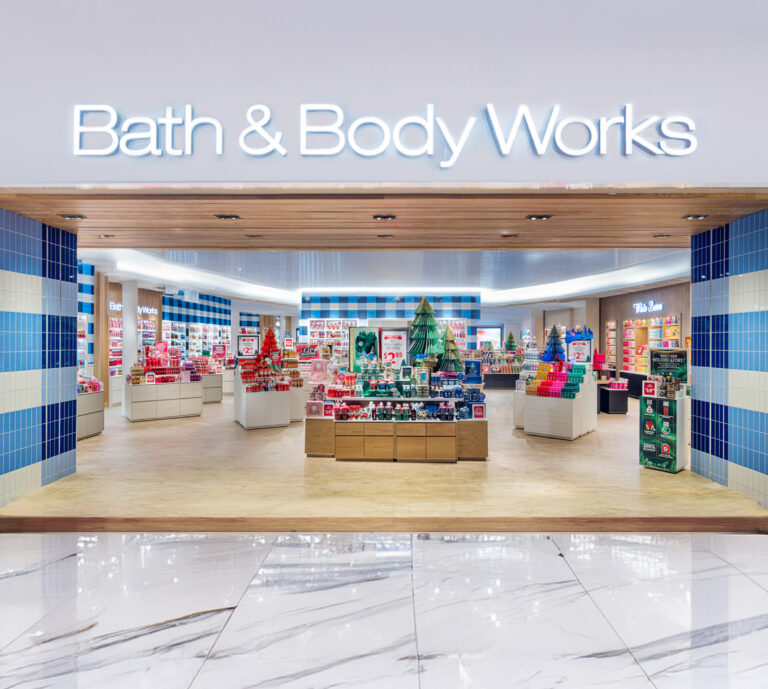×

Our Executive Director of Architecture, Glen Middleton, shares how brands should be approaching sustainable retail design.

In Chain Store Age, we identify four clear strategies to building smaller format retail spaces, each suited to a different business objective.
It has been 20 years since Home Depot introduced plans for a smaller format store. Its intention was to address urban areas where their traditional store concept wouldn’t fit. However, while today’s motivations may be different, the desire for smaller formats is still strong. Best Buy, for instance, has been opening small footprint locations for ecommerce fulfillment. Getting more from less has always been a way of making stores work harder. But like playing limbo, there is a point where your concept can get too contorted to stand up to shopper expectations.
A one-size-fits-all approach to retail is predicated on economy of scale and was well suited for a market that was expanding as populations shifted to suburbs. Big-box players saw big growth as they moved from dozens of stores to hundreds, even thousands- but those days are over. Market saturation, along with the growth of e-commerce, labor challenges, and rising building costs, are forcing retailers to think differently about development. Smaller formats are a way to keep momentum but require weaning off the one-size/cookie cutter model that may have driven past success.
At ChangeUp, we see the need to be smaller as being critically linked to being smarter. How to go to market with a small format involves managing customer expectations, brand impact, marketing, operations, and sending the right message to investors. But fundamentally, the role of the small format needs to be clear and complement, not contradict, the existing fleet. We see four clear strategies that exist, suited to a different business objective.
1. The Reductionist.
This is the most commonly thought-of approach to a small format. Like Home Depot’s 20-year-old idea, a reductionist strategy seeks to “right-size” the core concept to enable more site potential or fit into markets with unique real estate conditions. Editing is the challenge, and deciding what to cut and what to keep isn’t as easy as looking at a spreadsheet of sales contribution.
For big-box stores, having a broad selection or a variety of pack-sizes is often a brand expectation. Proportionally reducing each category can result in death by a thousand pinpricks. Attempting to reduce through market area curation can also backfire, as often your brand appeal is linked to the distinct goods associated with your brand. At ChangeUp we use a combination of insights into brand expectations, paired with financial modeling, to determine what can be smaller AND often better for customers. The Reductionist approach is still relevant, especially with 20 years of seeing what works and what doesn’t.
2. The Spin-off.
Most recently, we have continued to see a rise in off-price concepts such as Saks OFF 5th and Nordstrom Rack. These are smaller than their department store parents and offer a proposition of exclusive deals while bringing the retailer to markets often too small to serve with their core concept.
But an off-price variant isn’t the only way to approach a spin-off strategy. Retailers can create new concepts that will appeal to audiences their core brand may not be able to reach.
Dollar General has taken this spin-off approach with their Popshelf concept. Popshelf appeals to a younger, more affluent, and more suburban demographic who enjoys finding deals and shopping for fun. The concept also includes higher margin home goods and seasonal items that capture more discretionary spending, whereas Dollar General focuses on essentials. Popshelf enters the market more like an exciting new start-up, but with the capital, management savvy, and purchasing power of the parent behind it.
When considering an off-price approach, retailers are building an enterprise that adds revenue, but does not build its own independent brand value. That in effect creates an asset that cannot be sold off in the future, but can only be shuttered if it doesn’t meet performance goals. Creating a new concept, like Popshelf, has the potential to be a completely independent brand that builds equity on its own, creating a whole new platform for growth. We can help brands navigate a spin-off strategy, the upsides and downsides of extending their brand versus creating a new one, and what experiences can cross over from the parent to build distinction and add value.
3. The Showroom.
Omni-channel investment has created the opportunity to overcome some of physical retail’s biggest challenges- the cost and space requirements of inventory. Retailers who have the capabilities to fulfill BOPIS transactions, and /or efficient last-mile delivery of online orders, can look to smaller format stores to enter more trade areas. A showroom strategy, where conversion rates on higher-ticket items can be higher than online, or inspiring vignettes can prompt complimentary purchases, can fuel growth. Bringing the brand to smaller or more dense urban markets can raise visibility and create more online buzz, resulting in more financial returns. IKEA’s planning studios in the New York City market are a great example of this strategy. Customers can get inspired and design IKEA-based solutions to their living spaces, then have their orders fulfilled within days.
Retailers whose offer includes products worth waiting for (like IKEA’s) can create hybrid experiences where they can take advantage of foot traffic with a limited assortment of grab-and-go merch as well. These showroom experiences present the opportunity for emotionally rich, visually exciting experiences that lean-in to distinct brand expression and can be great platforms for building long-lasting customer connections.
4. The Game Changer.
Looking towards the future, a smaller-is-better mindset may be the catalyst for reimagining the business from the ground up. Our work with Panera Bread, for example, began with the mission of reducing the size of the concept. The result is a new prototype that is 30% smaller than the previous design, yet adds a drive-thru and a better, more enhanced connection to the fresh presentation of the bakery. The concept retains the essential brand experiences that on-premises guests expect, while opening up more potential sites and delivering better ROI.
Panera is a great example of approaching a new design with more efficiency in mind from the start. For retailers, approaching a store-of-the-future initiative can, and perhaps should, look at executing in a smaller footprint as being a fundamental goal. The process begins with understanding that “what is” is not necessarily what ought to be. Retaining, and ultimately enhancing the appeal of the concept is achievable in less space that works harder. The result is a new platform for growth as well as key learnings that can flow back into existing store remodels.
At ChangeUp we see format strategy as an essential way for retailers to grow locations, but also a moment to re-evaluate the core concept and what matters for success. Understanding the brand dynamics, delivering on shopper expectations, solving the assortment and merchandising challenges, and improving the guest experience represent only some of the moving parts that need to be coordinated. We can guide, provide the tools, and bring the creative energy to the challenge.


